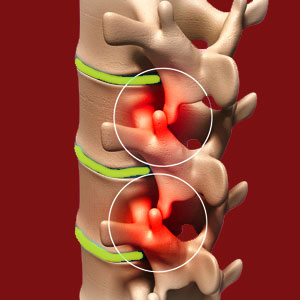
Failed facet joint surgery is a relatively common occurrence which leaves patients with postoperative symptomology and dashed dreams for recovery. Why does facet joint surgery fail? In the vast majority of cases, the operations are deemed successful from a structural viewpoint, meaning that the procedural goal was accomplished. Why is pain still present following “successful” surgery?
Facet joint surgery is typically much less invasive than other forms of spinal operations. It is less traumatic, less risky and features better therapeutic outcomes than many other techniques. However, facet joint operations do not always succeed and many fail, sometimes quite miserably. How do you know if your facet joint procedure will be successful or not?
This dialog provides detailed information about how and why facet joint surgery may fail. We will discuss measures that all pre-operative patients can take to help prevent their surgical undertakings from failing to live up to expectations.
How Failed Facet Joint Surgery Occurs
Facet joint surgery might fail for many different reasons. Here are some of the most common ways that procedures can disappoint in their outcomes:
The procedure might fail to achieve the surgical objective. This is utter failure and is usually due to surgeon error or oversight. Bone spurs might not have been removed, joint functionality might not be restored or narrowed foramen might remain blocked. This is one of the least common types of procedural failure, but these things do occur.
The surgical goal might have been successful, but the patient still has similar pain postoperatively. This is the most common of all procedural failures and is the sad result of a significant percentage of all facet joint surgeries.
Patients might suffer worsened pain, new pain or some dire complication that makes the condition much worse post-operatively. While this is rare, it does occur and can spell disaster for any patient who was hoping for a cure, but instead is now worse for wear…
Why Facet Joint Surgery Fails
Facet joint surgery might fail for many different reasons. Surgical error or oversight is possible, as is the occurrence of complications that can make even the best executed and otherwise successful surgery go wrong. However, choosing a good quality, experienced surgeon and having the procedure performed in a hygienic and reputable facility will prevent most of these types of failure.
Far more commonplace is misdiagnosis being responsible for surgical failure. This is not only true for facet joint surgery, but for all spinal operations across all back and neck pain diagnoses worldwide. Surgery often fails because the cause of pain has been misdiagnosed. It is that simple.
Facet joint pain is often an incorrect diagnosis. Sure, there may be facet joint degeneration and osteophyte growth, but these occurrences are universally observed in adults and are rarely the source of any symptoms. Most facet joint changes are completely asymptomatic or only mildly symptomatic. Meanwhile, the serious pain that is being suffered is NOT caused by the facet joint changes, but instead by some other undiscovered causation.
In essence, the facet joint changes act as a scapegoat for pain and are targeted for treatment without need. Of course the pain will endure postoperatively, since the actual origin of symptoms was never addressed during the procedure.
Preventing Failed Facet Joint Surgery
It is common sense that you will want to hire the very best surgeon available to you. It is also common sense that you will want to have your procedure in the best facility available to you. We do not need to give you such rudimentary advice. Instead, we will provide guidance that might not be so obvious…
Yes, you have seen evidence of changes in your facet joints on medical imaging. There is no doubt that they are there. The doubt should be whether or not these changes are pathological and therefore the true source of pain. In most cases, the answer is no. Therefore, we urge you to get more than one diagnostic opinion on the source of your pain prior to surgery. Getting a second or third medical opinion is not only wise, it is necessary to protect yourself against the horror of misdiagnosis.
Additionally, be proactive and get more involved in your own care. The fact that you are reading this right now is great. Keep researching and learning all that you can! Look for holes in your current diagnosis. In many cases, the symptoms do not correlate to the cause they have been blamed on. We routinely observe patients with diagnosed facet syndrome whose pain is far too severe and wide-ranging to ever come from the implicated facet joint source. Be mindful of these types of mistakes and look for them in your own situation. This is the best way to protect yourself against failed facet joint surgery.
Facet Joint Pain > Facet Joint Surgery > Failed Facet Joint Surgery





